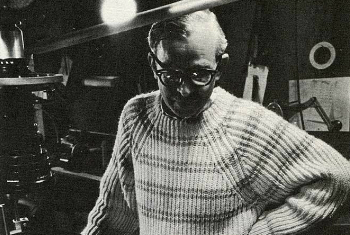John Whitney
Filmmaker
Using abstract film and computers, John and James Whitney experimented with image and perception from the 1940s to the 1960s, predating work with video image synthesis. Interestingly, these West Coast experimental filmmakers used graphic notation and computers; in particular, John Whitney further pursued this approach to explore parallels between language and music systems. In 1962, John Whitney produced computer films, first with an IBM analog computer (since 1966 only digital computers can be used in film). In the works Matrix I-III (1970-1972, USA), Whitney developed an abstract film with the computer by programming a system of moving graphic patterns. These films by John Whitney, together with James Whitney’s film Lapis (1963–1966, USA) in which he used an analog computer, John Stehura’s Cybernetic 5.3 (1965-1969, USA), and Stan VanDerBeek’s studies of Poem Fields (1966, USA), set the precedent for computer film. The role of early computer films to create an abstract and systematic visual language was further carried out in video, where the primary interest lay in the development of a “lexicon of electronic vocabulary”.
(biography by Woody Vasulka, from La fondation Daniel Langlois).
Update: 10 October 2016
